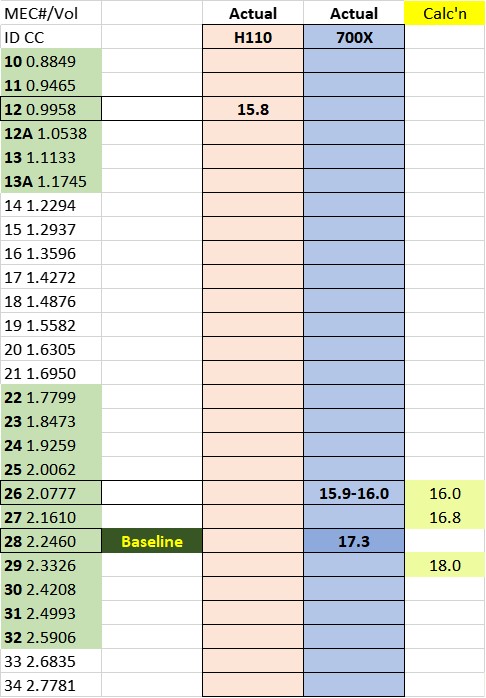So I dug out the MEC, loaded up a bar and a bushing, grabbed a fired hull and got to work testing how much powder it would actually drop. I chose 700X and #8 lead Hummason shot. The hull is a once-reloaded Winchester Universal, but it doesn't matter; I was really only using it as a receptacle to receive the shot and powder.
The hull was run through the following processes:
Deprime/resize
Reprime (I put the expended primer back in)
Drop powder ---> the charge was weighed on a beam balance scale at this point and then dumped back into the powder bottle.
Drop shot ---> A wad was not inserted, but the handle was pulled, the shot was dropped into the hull and then poured back.
One pull to simulate the pre-crimp
One pull to simulate crimp finish.
The charge mostly stabilizes between 17.5gn and 18gn, which is good for almost all the load combinations I have in front of me (older IMR booklet), but there are intermittent and unpredictable excursions to 19gn, which constitutes an overcharge with the two types of primer I currently have.
I know I can almost certainly fix this issue by dropping back to a slightly smaller bushing, which should bring the intermittent overcharges down within the safe range, but I would have thought that after about a dozen simulated cycles it ought to have stabilized. I obviously can't take hulls through the full load cycle while I'm still waiting for the charge weight to stabilize, especially if it's throwing overcharges, but I am at least trying to simulate the full number of pulls that everything would go through to cause charge settling before the next one is dropped.
The inconsistency is infuriating! I might as well be weighing my powder and shot charges off the press and only using it to deprime, reprime, wad-seat and crimp. (I do have an adjustable shot-charge pourer and Lee dippers; I'm not entirely afraid to go down that route.)
What am I missing?
The hull was run through the following processes:
Deprime/resize
Reprime (I put the expended primer back in)
Drop powder ---> the charge was weighed on a beam balance scale at this point and then dumped back into the powder bottle.
Drop shot ---> A wad was not inserted, but the handle was pulled, the shot was dropped into the hull and then poured back.
One pull to simulate the pre-crimp
One pull to simulate crimp finish.
The charge mostly stabilizes between 17.5gn and 18gn, which is good for almost all the load combinations I have in front of me (older IMR booklet), but there are intermittent and unpredictable excursions to 19gn, which constitutes an overcharge with the two types of primer I currently have.
I know I can almost certainly fix this issue by dropping back to a slightly smaller bushing, which should bring the intermittent overcharges down within the safe range, but I would have thought that after about a dozen simulated cycles it ought to have stabilized. I obviously can't take hulls through the full load cycle while I'm still waiting for the charge weight to stabilize, especially if it's throwing overcharges, but I am at least trying to simulate the full number of pulls that everything would go through to cause charge settling before the next one is dropped.
The inconsistency is infuriating! I might as well be weighing my powder and shot charges off the press and only using it to deprime, reprime, wad-seat and crimp. (I do have an adjustable shot-charge pourer and Lee dippers; I'm not entirely afraid to go down that route.)
What am I missing?

